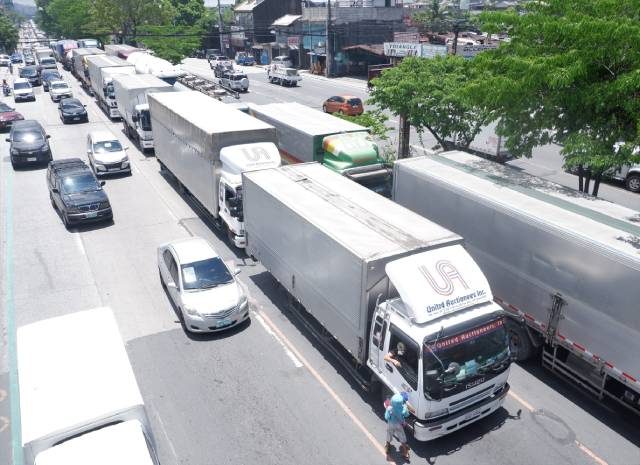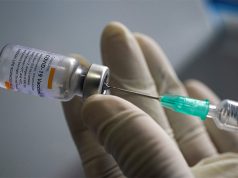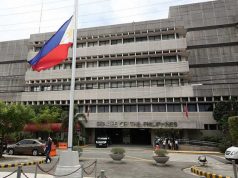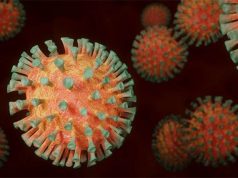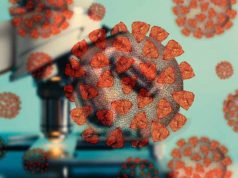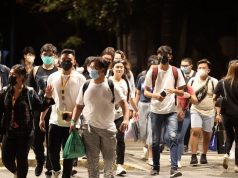The national government’s decision to ease quarantine measures starting June overlooked the warning from local researchers against prematurely lifting them.
In a late-night televised briefing on Thursday, President Rodrigo Duterte approved the recommendation of the Inter-agency Task Force (IATF) to graduate areas under the modified enhanced community quarantine to the general community version or GCQ starting June 1.
“We are not happy to put you in this place but after review maybe we can,” Duterte said.
The rest of the country, which was previously covered by GCQ, will move on to a more relaxed measure called modified GCQ phase.
He did not mention in the national address if this directive will be imposed until June 15, which was also part of the IATF’s recommendation.
“In other areas, it will be again on a piecemeal basis depending on the viability of the place to
meet the challenges of COVID. From time to time, Secretary Roque would
give us the places where there will be changes,” Duterte said.
Regions and provinces that will be covered by the GCQ for 15 days include:
- National Capital Region
- Entire Region 2 (Cagayan, Isabela, Nueva Vizcaya, Quirino, Santiago City)
- Entire Region 3 (Aurora, Bataan, Bulacan, Nueva Ecija, Pampanga, Tarlac)
- Entire Region 4-A (Cavite, Laguna, Batangas, Rizal, Quezon, Lucena City)
- Albay
- Pangasinan
- Davao City
The fate of the provinces of Mandaue and Cebu City, which are still under the first phase of ECQ, were also not discussed.
Based on the matrix previously released by the Presidential Communications Operations Office, GCQ allows more businesses in industries from categories 2 to 3 to partially reopen.
All modes of public transportation are supposed to be allowed to operate with limited capacity.
However, in Metro Manila, jeepneys are still not allowed to ply for three more weeks.
‘More testing and solve data issues first’
This decision was made despite a warning from local researchers of the University of the Philippines against lifting restrictions too soon.
On May 28, a group of researchers led by Professor Guido David, Ph.D. (UP Institute of Mathematics), Associate Professor Ranjit Singh Rye (UP Department of Political Science), and OCTA Research Associate Ma. Patricia Agbulos released their eighth forecast report on the novel coronavirus pandemic situation in the country.
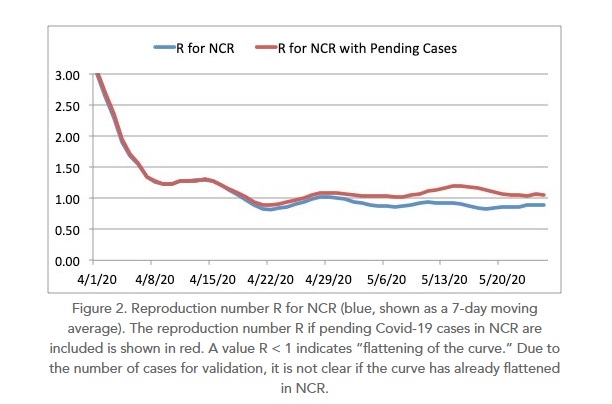
In the report, the researchers recommended to the government to continue the MECQ in NCR and other high-risk areas based on their analyses in the number of cases and rate of transmissions in high-risk areas.
They cited the following factors as the reasons to extend MCQ in high-risk areas.
- Backlog validating the number of confirmed cases in NCR
- Uncertain if the curve has already flattened in NCR
- The dramatic increase in the number of cases in NCR and other high-risk areas
- Gaps in the Department of Health’s data collection
Because of these factors, the researchers recommended to extend MECQ and perform the following activities:
- Enhance the official data from the DOH
- Increase testing capacity and improve the turnaround time of COVID-19 test results
- Improve mass targeted testing and contact tracing in all high-risk areas
They also suggested the use of “serological surveys” as a cost-efficient tool for countries with limited testing capacities as the Philippines that will “determine to what extent the population is infected by Covid-19 and to visualize the severity of its effect on a community.”
“A serological survey involves testing the blood of people not diagnosed with Covid-19 and is used to quantify the proportion of the population infected by the virus,” the report said.
“However, to have a representative sample, those who must be tested should come randomly from the population that reflects the community’s socioeconomic, geographic, age, and ethnic diversity,” the report added.
Job risks after ECQ
Last May 22, the UP Resilience Institute also similarly shared photos on Facebook about potential job risks should regions and cities graduate from ECQ.
What do we need to be careful about when resuming economic activities after the ECQ period? The UP COVID-19 Pandemic…
Posted by UP Resilience Institute on Friday, May 22, 2020
Their main findings include:
- 65% have a high potential to spread the COVID-19 disease
- Half of the jobs are exposed to moderate risk while 38% are at high risk
- 22.7 million workers with moderate risk jobs must resume work to produce at least 60% of the gross regional domestic product
- 82% of jobs in the country have high importance to sustain the economy in the next 18 months, however, only 10% can easily adopt a work-from-home arrangement
‘Survivor Philippines’
Following the announcement of MECQ lifting last night, the keywords “Survivor Philippines” to refer to workers who will go outside amid the threat of COVID-19 and “Metro Manila GCQ” landed on the Philippines trend list on Twitter as the public expressed their fears for the coming week.
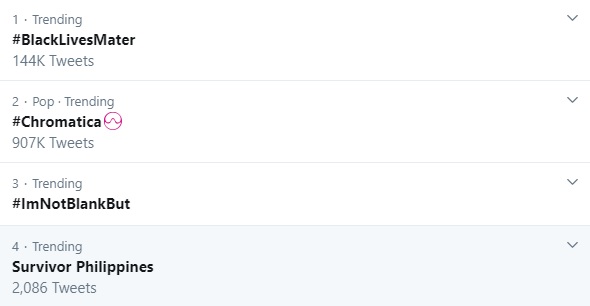
A Twitter user shared an animated graphic from the movie “Hunger Games” to suggest that it is survival of the fittest starting next week.
On June 01, Monday is the first day of The Survivor Philippines, Metro Manila Edition. (GCQ) pic.twitter.com/ih6UhCwdQD
— Yat (@MeZehri) May 28, 2020
Another user expressed disappointment over the placement of the region under GCQ despite the recent spike in the number of cases and lack of mass testing.
are they seriously putting metro manila under GCQ when there are already 536 new positive cases IN JUST A DAY and yet no concrete plans even for a mass testing??? so, matira matibay nalang talaga tayo dito. pic.twitter.com/HYebDo4jTl
— jane 🐺 GO生 (@yeojabyul) May 28, 2020
During the announcement on Thursday, Duterte himself announced that the NCR recorded the highest number of confirmed COVID-19 cases.
The Department of Health recorded 539 new cases on Thursday, the highest single day increase to date.
“The total active cases is 11,069. So ang NCR is topnotcher which is 330 or 61 percent. Then we have Region VII, 55; others, 99.
Mga repatriate, ‘yung dati nadala dito 55. All in all, para sa akin, hindi naman masama ito,” Duterte said.
The DOH, however, pointed out that the COVID-19 cases surge is due to the “recent rollout of COVIDKAYA information system that has greatly sped up the verification process for confirmed cases.”
“The cases that were reported over the last days reflect tests that were conducted the days and weeks prior. The reporting lag is due to delays in submission of results by laboratories and the manual verification process to ensure that each case is a unique individual,” it said.

